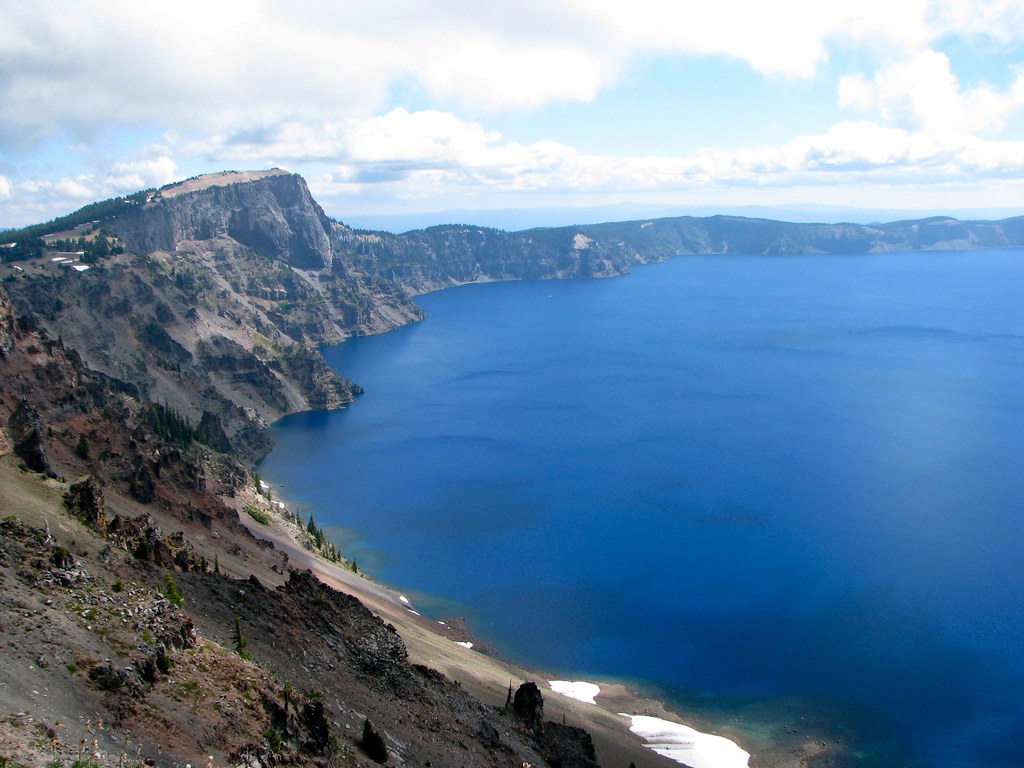It often seems to start with the simplest of questions before turning hopelessly complex. What’s the deepest lake? That doesn’t sound too difficult. It’s straight-forward. It seems to beg an easy answer, and it even provides one. Sort-of. Maximum depth or mean depth? Does it have to poke above the surface? What if it’s covered by ice or rock?
See what I mean?
Lake Baikal

Maybe it’s not that difficult. Let’s consult Wikipedia’s List of lakes by depth. Russia’s Lake Baikal (map) has both the greatest maximum depth (1,637 metres / 5,369 feet) and mean depth (758 m / 2,487 ft).
Baikal conceals an inordinate amount of superlatives within its immense size. Not only is it the world’s deepest lake by both common measurements, it also contains on the order of 20% of the earth’s non-frozen fresh water. The shape is typical of a rift valley. These are formed along faults in the earth’s crust where land splits to create a deep crack. Baikal filled with water and resulted in a 636 kilometre (395 mile) lake.
Case closed. We can all call it a day and get on with our lives. Lake Baikal answers my deepest lake question simply and elegantly. Everything would have been fine if I’d stopped right there, but longtime Twelve Mile Circle readers know that I’m unable to leave well enough alone.
Lake Tanganyika

Actually, Lake Tanganyika — the second deepest — was pretty straightforward once I decided to ditch mean depth (otherwise it would have been Lake Pinatubo in the Philippines) and stick with maximum depth (map). I also decided arbitrarily that if the maximum depth wasn’t 1000 metres or more then it wasn’t worth my attention.
Lake Tanganyika is another rift lake. It’s not quite as deep as Baikal at “only” 1,470 m / 4,823 ft., although it’s longer, stretching 673 km (418 mi). That enough to make it the longest freshwater lake in the world. Lake Tanganyika is also rather international with waters lapping into the territory of Burundi, DR Congo, Tanzania and Zambia.
I’m amazed by another feature: the huge variety of cichlid fish that have evolved within the lake over multiple millennia. Lake Tanganyika features prominently in the study of evolution. You may have seen the cichlids featured on the Mutant Planet series on the Science Channel not too long ago.
Caspian Sea

Now things start to take a more unusual turn. The Caspian Sea (map). Is it a sea or is it a lake? Even the experts can’t seem to make up their minds because it seems a little of both. If it’s a lake then the Caspian is the third deepest at 1,025 m / 3,363 ft. Certainly, it’s the largest fully-enclosed body of water on earth (disregarding man-made canals that connect it to other bodies of water). It was once part of the Paratethys Ocean until about 5.5 million years ago, and it even has a vestigial continental shelf. Thus, while it has some extremely deep spots it also has a lot of area that are more shallow. Sea? Lake? Feel free to select one on your own.
Lake Vostok

It gets downright freaky with Lake Vostok in Antarctica. I had to purloin a public domain radar satellite image just to demonstrate its outline because Lake Vostok sits under nearly 4,000 metres of ice. Feel free to check it out on a map although its not very impressive with nothing but white.
Beneath that ice shield, Lake Vostok (which is liquid) is believed to reach a maximum depth of something approaching 1,000 m / 3,300 ft beyond the ice, which is simply crazy. The water laid undisturbed for millions of years until Russian scientists drilled-down and punctured the surface in February 2012. Nobody is quite sure what they will discover as they probe water samples and perhaps send down robot vehicles. It’s theorized that Vostok could serve as a proxy for planets or moons with similarly ice-covered bodies of water. Could it hint at how life might evolve in extraterrestrial locations?
Best One I’ll Likely See Anytime Soon

The best that the United States can offer is Crater Lake in Oregon in 10th place, at 594 m / 1,949 feet at its deepest point (albeit #4 for mean depth). I realize that’s far short of 1,000 m but I have a hope of seeing this one in person (map).
Crater Lake is the remnant of a collapsed volcano so it’s a caldera filled with water. The old Mount Mazama once existed on this spot before its violent destruction nearly eight thousand years ago in a series of volcanic eruptions. Interestingly, no rivers or streams fill or drain Crater Lake. It’s maintained entirely by rain and snowfall, an interesting balance of precipitation and evaporation creating beautiful blue waters.
UPDATE: Trip Completed.

Leave a Reply